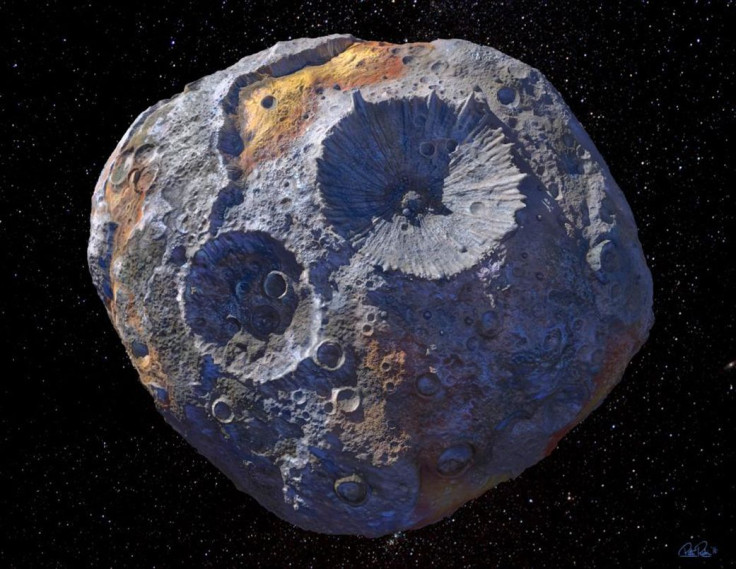NASA’s Psyche Mission To Metal Asteroid Will Launch In 2022

As a part of its Discovery Program, NASA announced in January two missions to study asteroids in a bid to better understand the early solar system. One of the missions, called Psyche, was originally scheduled for a 2023 launch, but the space agency said Wednesday the launch date had been moved up by a year, and the mission will head for the main asteroid belt in 2022.
Bringing forward the launch date by one year has a much larger ramification for Psyche’s arrival date at its destination, which is a unique metal asteroid, also called Psyche. The spacecraft is expected to reach the asteroid — which is located in the outer regions of the main asteroid belt between Mars and Jupiter, at a distance three times farther from the sun than Earth — in 2026 now, which is four years earlier than the older schedule.
The dramatic reduction in the travel time from Earth to Psyche is possible because of the revised trajectory the spacecraft will take, as per its new schedule. The planned trajectory now will not require any Earth gravity assist, will be farther from the sun (which reduces the amount of heat protection needed, thus reducing the overall weight) and will include a Mars gravity assist in 2023.
“The biggest advantage is the excellent trajectory, which gets us there about twice as fast and is more cost effective,” the mission’s Principal Investigator Lindy Elkins-Tanton of Arizona State University in Tempe, said in a statement Wednesday. “We are all extremely excited that NASA was able to accommodate this earlier launch date. The world will see this amazing metal world so much sooner.”
The asteroid Psyche is about 150 miles in diameter and is made almost entirely of nickel-iron metal. It is an interesting target for scientific study because it is the only known body in the solar system that offers the opportunity of directly observing a core that is almost certainly metallic. Studying it can potentially help us understand the process through which the inner planets formed, and what lies at their cores.
Its metallic composition is what makes Psyche unique. Except the gas giants, every other body in space that has been examined or explored by humans and our machines is made up of rock or ice, or both. It was discovered in 1852 by Annibale de Gasparis, an Italian astronomer, who named it after the mythological Greek goddess of the soul.
The spacecraft Psyche will spend 20 months in orbit around its namesake asteroid, mapping and studying its properties. To do that, it will house a number of scientific instruments, including a multispectral imager, gamma ray and neutron spectrometer, magnetometer, and a radio-science experiment.
Space Systems Loral from Palo Alto, California, is building the spacecraft. To speed up the spacecraft in line with its new schedule, SSL changed the design to include five solar panels instead of four, thereby increasing the overall size of the solar array.

“By increasing the size of the solar arrays, the spacecraft will have the power it needs to support the higher velocity requirements of the updated mission,” SSL Psyche Program Manager Steve Scott said in the statement.
The other asteroid mission chosen in January is called Lucy, which is scheduled for an October 2021 launch. It is expected to reach its destination — the two swarms of Trojan asteroids that share Jupiter’s orbit — after journeying for 12 years. On its way, it will also stop by at an asteroid in the main asteroid belt, and will study six Trojans.
© Copyright IBTimes 2024. All rights reserved.











